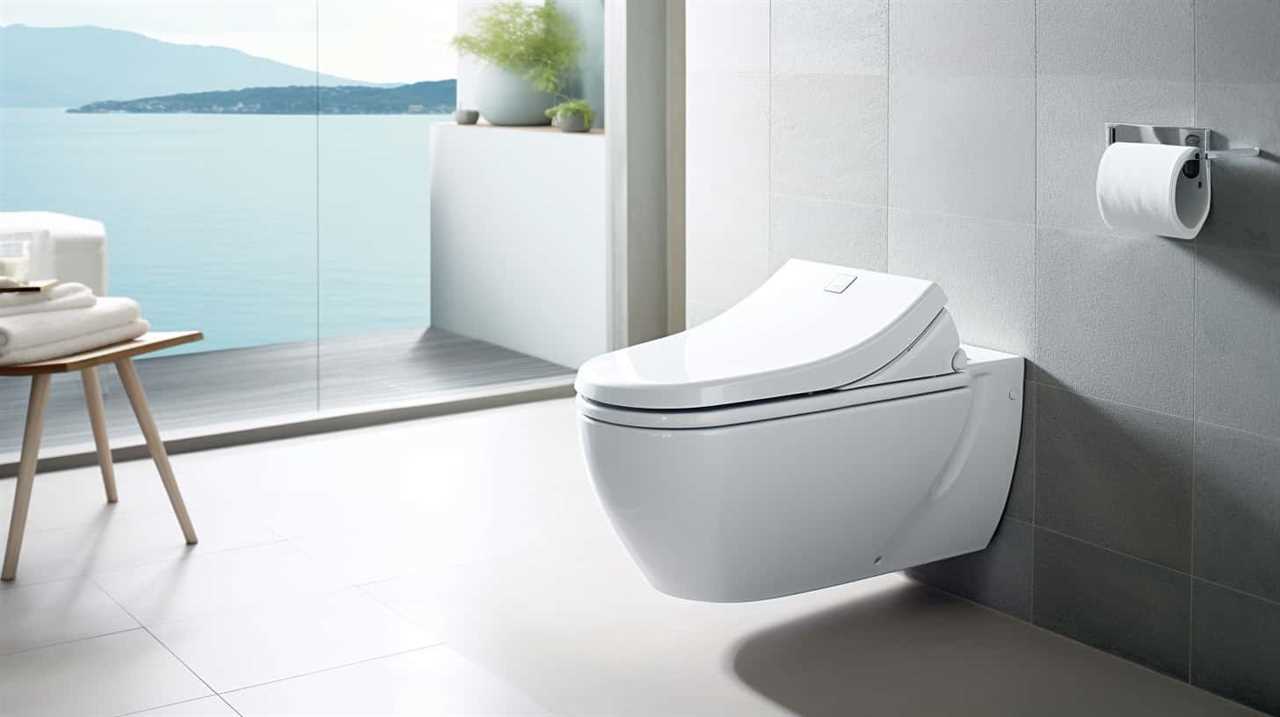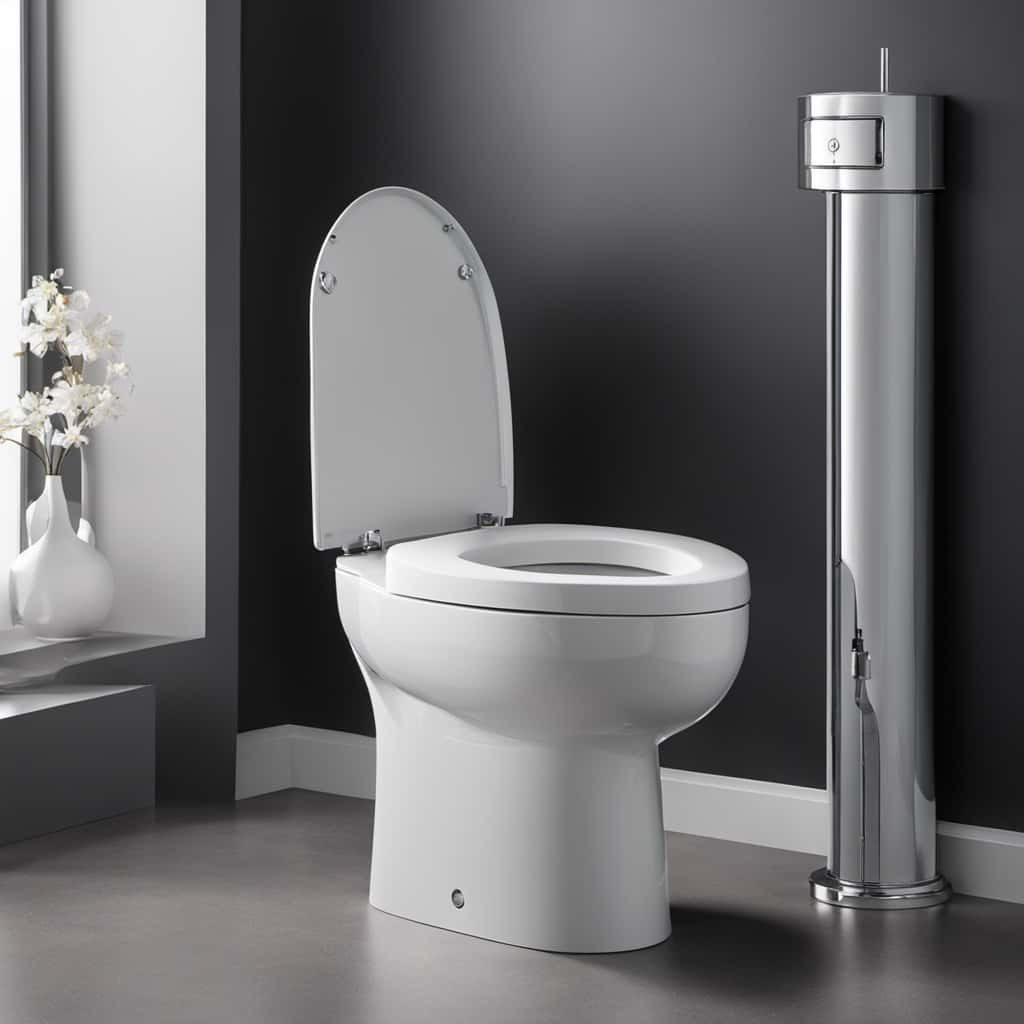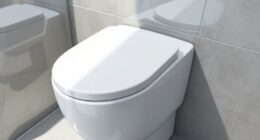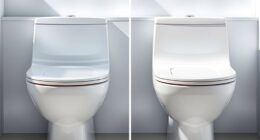Every time we flush the toilet, we are contributing to water wastage and energy consumption. It’s a fact that each flush utilizes a substantial amount of water and consumes unseen energy.
Additionally, the process of treating wastewater can have negative environmental impacts. Excessive toilet paper usage further exacerbates the problem.
But fear not, there are sustainable alternatives to traditional flushing methods. In this article, we will explore the environmental consequences of flushing and discover ways to minimize our impact.
Key Takeaways
- Flushing the toilet wastes a significant amount of water, with standard toilets using about 1.6 gallons (6 liters) per flush and older models using up to 3.5 gallons (13 liters) per flush.
- On average, a person can waste approximately 3,650 gallons (13,800 liters) of water in a year just from flushing the toilet, highlighting the need for water conservation.
- Flushing the toilet also requires energy, with electric pumps in some toilets consuming energy and wastewater treatment plants requiring significant energy for treatment.
- Excessive toilet paper usage can lead to deforestation, as toilet paper production contributes to large-scale logging operations. Exploring alternatives like bidets or recycled toilet paper can help mitigate ecological consequences and reduce reliance on natural resources.
Water Usage: How Much Water Is Wasted With Each Flush
We waste a significant amount of water with each flush of the toilet.

Water conservation is crucial in addressing the global issue of water scarcity.
To understand the extent of water wastage, we need to examine how much water is actually used during a flush.
On average, a standard toilet uses about 1.6 gallons (6 liters) per flush, while older models can use up to 3.5 gallons (13 liters) per flush.
This may not seem like much, but considering that an average person flushes the toilet around five times a day, the water usage quickly adds up.

In a year, a single person can waste approximately 3,650 gallons (13,800 liters) of water just from flushing the toilet.
This highlights the importance of implementing water-saving measures and using more efficient toilet models to conserve water and combat water scarcity.
Energy Consumption: the Hidden Energy Costs of Flushing
To continue our examination of the environmental impact of flushing the toilet, let’s now delve into the hidden energy costs associated with this everyday act.
While the primary focus is often on water usage, it’s important to recognize that flushing also requires energy. Most toilets rely on gravity to flush, but some use electric pumps to assist with the process. These pumps consume energy, contributing to hidden costs.

Additionally, wastewater treatment plants require significant amounts of energy to treat and process the flushed water.
To mitigate these hidden costs, conservation measures can be implemented. Installing low-flow toilets, using dual-flush mechanisms, or opting for composting toilets can reduce both water and energy consumption.
Pollution: the Environmental Impact of Wastewater Treatment
While flushing the toilet may seem like a simple act, it’s important to recognize the environmental impact of wastewater treatment. Waste management plays a crucial role in reducing pollution and ensuring the safety of our water resources.
Wastewater treatment plants are responsible for removing harmful substances and contaminants from the water before it’s released back into the environment. However, the process of treating wastewater can also have unintended consequences. One of the major concerns is water contamination. Inadequate treatment processes or malfunctioning equipment can lead to the release of pollutants, such as chemicals and pathogens, into rivers, lakes, and oceans. This can have detrimental effects on aquatic ecosystems and pose a risk to human health.

Therefore, proper waste management practices and continuous monitoring are essential to minimize the environmental impact of wastewater treatment.
Toilet Paper: the Ecological Consequences of Excessive Toilet Paper Usage
The excessive usage of toilet paper can have ecological consequences, impacting both the environment and our water resources.
One of the main concerns associated with excessive toilet paper usage is the potential for deforestation. Toilet paper is made from trees, and the demand for toilet paper has led to large-scale logging operations in some areas. This deforestation not only destroys valuable ecosystems but also contributes to climate change by reducing the amount of carbon dioxide that can be absorbed by trees.
Furthermore, the recent toilet paper shortage has highlighted the need for more sustainable alternatives. By reducing our reliance on toilet paper and exploring environmentally-friendly options such as bidets or recycled toilet paper, we can help mitigate the ecological consequences of excessive toilet paper usage and preserve our natural resources for future generations.

Sustainable Solutions: Alternatives to Traditional Flushing Methods
One possible solution to mitigate the environmental impact of flushing toilets is by exploring alternative, more sustainable flushing methods. These innovative technologies can help us save water and reduce our ecological footprint.
Here are three options to consider:
- Dual-flush toilets: These toilets have two buttons or handles, allowing users to choose a low-volume flush for liquid waste and a higher-volume flush for solid waste. This simple design change can significantly reduce water usage.
- Composting toilets: These toilets use little to no water and instead break down human waste into compost. They’re a great option for areas with limited water resources and can contribute to sustainable agriculture practices.
- Greywater systems: These systems collect and treat water from sinks, showers, and washing machines, making it suitable for flushing toilets. By reusing water that would otherwise go to waste, greywater systems promote water conservation.
Frequently Asked Questions
Can Flushing the Toilet Too Often Lead to Water Shortages in Certain Areas?
Flushing the toilet too often can contribute to water shortages in certain areas. Water conservation is crucial, and reducing toilet usage is one way to conserve water and mitigate the impact on the environment.
Is It True That Flushing the Toilet With the Lid Open Can Release Harmful Bacteria Into the Air?
When flushing the toilet with the lid open, harmful bacteria can be released into the air. This can pose health risks as these bacteria can be inhaled or land on surfaces, potentially causing infections or illnesses.

Are There Any Health Risks Associated With Using Excessive Toilet Paper?
Using excessive toilet paper can pose health risks, such as clogged pipes and plumbing issues. Additionally, it can have a negative impact on wastewater treatment systems. Exploring toilet paper alternatives may help mitigate these concerns.
How Does the Use of Chemical Cleaning Agents in Toilets Affect the Environment?
Using chemical cleaning agents in toilets can have a negative environmental impact. These agents often contain harmful ingredients that can contaminate water sources and harm aquatic life. It is important to consider eco-friendly alternatives.
What Are Some Eco-Friendly Options for Replacing Traditional Flushing Toilets?
Eco-friendly toilet alternatives and water-saving toilet options are important considerations for reducing our environmental impact. By exploring innovative solutions, we can find ways to minimize water usage and promote sustainability in our daily lives.
Conclusion
In conclusion, it’s evident that flushing the toilet has significant negative impacts on the environment. The amount of water wasted, the hidden energy costs, the pollution from wastewater treatment, and the ecological consequences of excessive toilet paper usage all contribute to the overall harm caused.

It’s crucial for us to explore sustainable alternatives to traditional flushing methods in order to minimize our ecological footprint and protect our planet for future generations.










